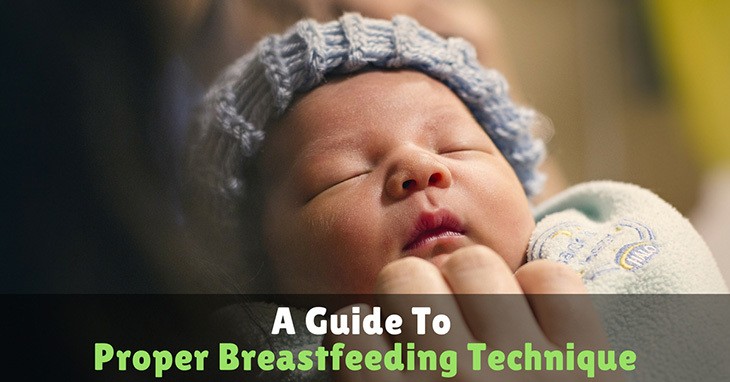A Guide To Proper Breastfeeding Technique
As much as breastfeeding is deemed to be one of the most natural acts for moms and their babies, it is not a thing that comes naturally to all women. Some perfect the nursing process within a very short period while others take a little bit longer to master the new experience.
If breastfeeding is not a walk in the park for you don’t get disappointed- once you master the right techniques and practice them often, the experience will get easier for you. Here is a guide to properly breastfeeding that will ascertain that you are on the right track when it comes to nursing your baby.
More...
Breastfeeding Positions
There are multiple breastfeeding positions you could try. If one does not work for you and your baby, feel free to try another. These positions include:
1. Cradle Holding
This is one of the classic breastfeeding positions that ever was. In this position, your little one’s head should be lying in the crook of your hand. If you are breastfeeding your baby on the left breast, then let your little one’s head rest on the crook of your left arm. To ensure that you sit comfortably with no need to lean forward toward your infant, you could sit on a chair that has an armrest or a bed with many pillows.
Or better yet, get a nursing pillow of your choosing as it will do the job better because that is what it is designed for. Be sure to rest your feet on a table, stool or a raised place to ensure that you sit comfortably.
You could also opt to hold your baby on your laps or on a pillow placed on your laps. In this position, the baby should be lying on their side- his or her knees, face and stomach should be facing you directly. To support the baby’s spine, neck and back you should use your forearm.
2. The Cross-cradle Hold
This position is different from the cradle hold in that you support your little one’s head with your arms and not the crook of your arm as in the former. If you are breastfeeding him or her from your left breast, then you use your right arm to hold your infant. This position requires you to rotate the baby’s body so that the tummy and the chest face you directly. To guide your baby’s mouth to your breast, you should place your thumb and fingers right behind his ears and head respectively. This position is ideal for babies who are experiencing latching problems.
3. The Clutch Hold
Just as the name suggests, this position requires you to tuck the infant under the arm just like you would do with a clutch bag. This ought to be on the same side with the breast he or she is feeding on. Your baby’s face should be facing you, their nose should be on the same level as your nipple and their feet facing your back. Support your little one’s shoulders, head, and neck with a c-shaped hand. The c-hold will enable you to guide your baby to your breasts’ nipples. Remember to do this chin first.
This position would be ideal for moms who gave birth via the cesarean section as the baby will not lie on your stomach. Also, moms with babies who have latching on difficulties can consider using this nursing position.
4. Reclining Position
This position allows you to nurse your baby as you lie on your side. However, you will need to ask someone to place pillows right behind you to ensure that you are well-supported. Some pillows should also be placed on your shoulders and head. The other one should be placed between your knees which will be bent at this time to ensure that your back and hips maintain a straight-line position throughout the process.
Now draw your little one closer and cradle the baby’s head with your top or bottom arm. If he or she is not able to reach your nipple, you could place a pillow or a folded blanket under his or her head. Be sure that you are neither bending to reach your baby nor is he straining to reach your breast.
This position is ideal for women who have undergone a C-section or difficult delivery. In comparison to sitting down while nursing, lying down is less strenuous.
Useful Breastfeeding Techniques To Use
Recommended Articles:


